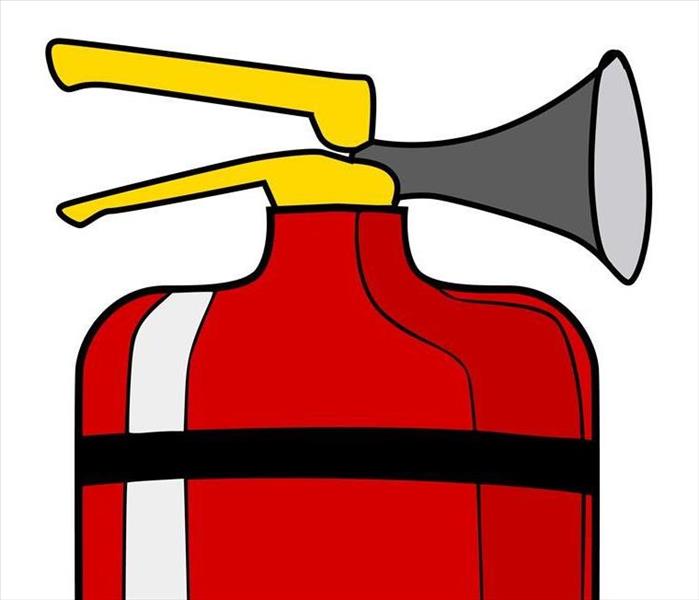The Basics of Fire Extinguisher Use and Maintenance
5/12/2022 (Permalink)
A fire extinguisher on your commercial property in Ogden, UT, is a powerful tool to stop a fire before it gets out of control. This simple, relatively inexpensive device could prevent injuries and deaths, thousands of dollars in property damage and the possibility of a long and costly business interruption.
The device, however, is not of much use if it doesn't work when needed or if employees do not know how to properly use it. A solid understanding of fire extinguishers can be obtained with some basic knowledge.
The Different Types of Extinguishers
The National Fire Protection Association lists at least five different types of portable extinguishers based on the extinguishing agent inside the canister. Each device works better on certain types of fires. Anyone in your facility who might use an extinguishing device should understand the following information:
- Class A devices work better on fires fed by cloth, wood, paper and rubber
- Class B devices work on fires fed by combustible liquids such as oils and solvents
- Class C devices work on fires caused by energized electrical equipment
- Class D devices are used for fires fed by combustible metals
- Class K devices are used for fires caused by combustible oils and fats
Each device will have information on it indicating its class. Extinguishing agents vary from water to carbon dioxide to foams to dry chemicals. Each device has its pros and cons for use, storage, maintenance and cost.
The Process of Using a Fire Extinguisher
The start of a fire is a poor time for individuals to learn how to use an extinguisher. Your company should train employees ahead of time, as this will facilitate speed and safety. Almost all devices use the PASS method, which consists of four critical steps:
- Pull the pin out of the unit to activate it
- Aim the discharge nozzle at the base of the fire
- Squeeze the handle to discharge the extinguishing agent
- Sweep the nozzle along the base of the fire
When used properly, an extinguisher can be very effective at limiting fire damage. Afterward, your company will likely need the services of a professional fire restoration team from your area. Trained and certified technicians will come to your building and follow the proven principles of a fire cleanup. This will enable your business to move on quickly after a fire.
The Importance of Maintenance
Whether your company is concerned about a kitchen fire or an industrial fire, the extinguishers you have on-site should be maintained according to all applicable codes and standards. This involves such things as clearly identifying areas where extinguishers or located and doing the necessary checks to make sure the devices are not out of date. A good inspection includes looking at the date of manufacture, checking the date of the last hydro test, inspecting for signs of damage or corrosion and looking for cracks in the hose.
Your company will be better off with at least one fire extinguisher on the premises. You should also make sure several employees know how to use the device, and that the unit will be in good shape when it is needed.




 24/7 Emergency Service
24/7 Emergency Service
